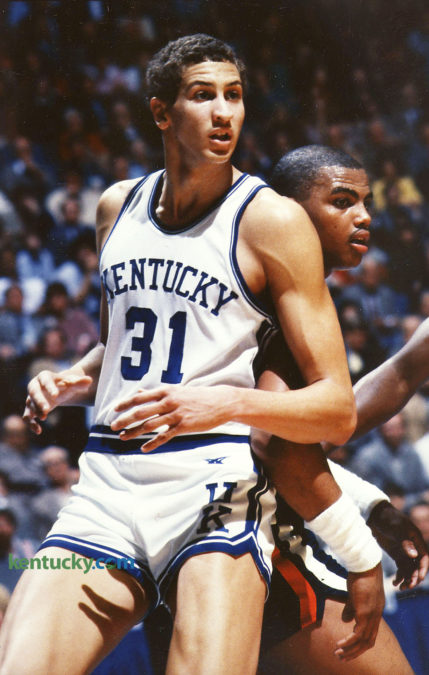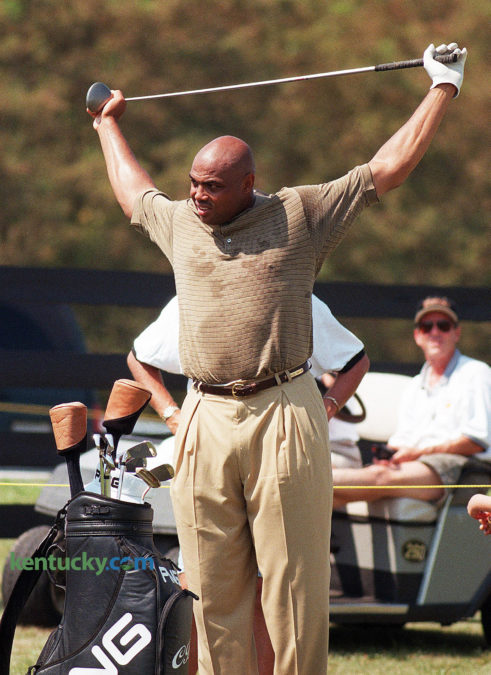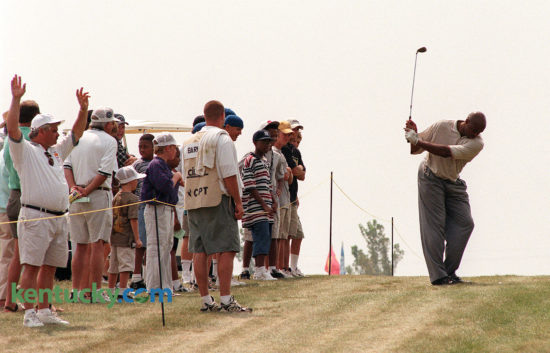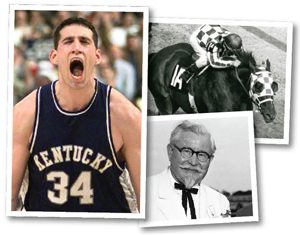September 15, 2025
José Ferrer and sons filming in Kentucky, 1982
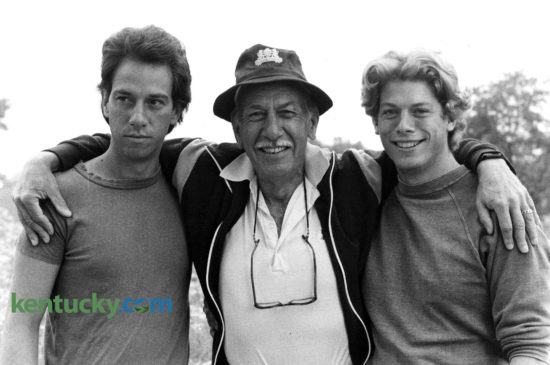
Oscar-winning actor José Ferrer and sons Miguel, left, and Rafael, were in Woodford County in June 1982 for the filming of a Thoroughbred racing movie, “And They’re Off.” All three Ferrers had roles in the film, as did George Clooney in his first film role. José Ferrer, who won the 1950 best actor Oscar for his role in “Cyrano de Bergerac,” was married twice to Kentucky native Rosemary Clooney, George’s aunt. Miguel and Rafael were two of their five children. Miguel Ferrer, who was 25 when this photo was taken, died Thursday at age 61. He had been fighting throat cancer. He had a long TV and film career, including key roles in the series “Twin Peaks,” “Crossing Jordan” and more recently “NCIS: Los Angeles.” He also had key roles in the films “Robocop,” “Traffic” and “The Manchurian Candidate.” “And They’re Off” had a $10 million budget but earned only $7 million at the box office. Published in the June 13, 1982, Sunday Herald-Leader. Photo by Joyce Rudolph.
Rick Pitino introduced as Kentucky basketball coach, 1989
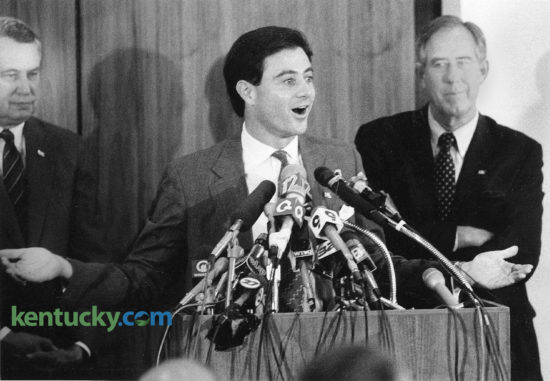
Rick Pitino during his introductory news conference as the University of Kentucky basketball coach on June 1, 1989. Behind Pitino to the right is the man who hired him, first-year athletic director C.M. Newton. Pitino, 36, the coach of the NBA’s New York Knicks, said he was up to the challenge of guiding Kentucky out of its cloud of NCAA sanctions. “Sanctions and probations just make it a little bit tougher,” Pitino said in a Patterson Office Tower board room packed with reporters, 15 television cameras and UK officials. “But we will overcome all obstacles in making Kentucky basketball rich again.” Kentucky faced a ban on postseason play for two years, a ban on live television appearances in the 1989-90 season, and scholarship reductions as a result of an investigation that unveiled NCAA rules violations including the sending of $1,000 to a recruit’s father and cheating on a college entrance exam. Newton called Pitino’s hiring the “first step in rebuilding the basketball program.” In his remarks, Pitino referred to a recent Sports Illustrated cover story, headlined “Kentucky’s Shame,” that outlined the UK program he inherited. “I promise to you people in this room today, you’ll see Kentucky on the cover of Sports Illustrated once again,” Pitino said, “and it will be cutting down certain nets. It won’t be for what you saw last week.” Pitino and current UK basketball coach John Calipari discussed the Kentucky-Louisville rivalry, Pitino’s early days at UK and their introductions to coaching during an hourlong podcast that Calipari released recently. Photo by David Sterling | Staff
State basketball tournament at Memorial Coliseum, 1956
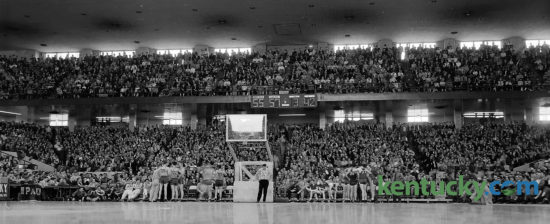
Memorial Coliseum in Lexington on March 17, 1956, when Carr Creek beat Wayland, 68-66, in a semifinal game at the Kentucky State High School Basketball Tournament. Henderson won the other semifinal, 78-63, advancing to the championship game and losing to Carr Creek, 72-68. The 1956 tournament often is regarded as the most memorable thanks to an abundance of last-second heroics, a collection of schools with exceptional basketball pedigrees, and the record-setting dominance of Wayland’s “King” Kelly Coleman, a player as mythical in the moment as he is today. Click here to read an oral history of that tournament, curated from new and existing interviews. And click here to read other stories in our series, “The Sweetest Century,” highlighting memorable moments from the state tournament’s 100-year history. Many of the seats shown here were removed during a 1990 renovation for what is today called the Joe Craft Center, housing offices for men’s and women’s basketball and athletic administrators. Click on the image for a closer look and note that the benches are on the baseline. Photo by E. Martin Jessee | Staff
Snowstorm cripples Kentucky, 1994
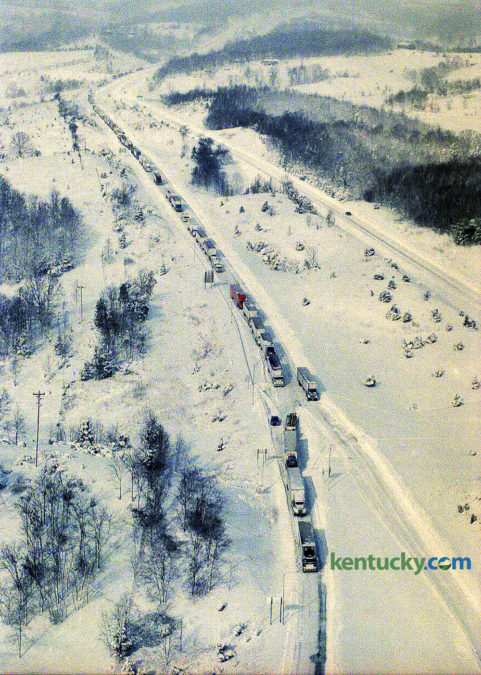
One of the worst snowstorms in 16 years stunned Kentucky on Jan. 18, 1994, closing virtually every main road and airport, causing hundreds of accidents and bringing subzero temperatures. Snow depths ranged from 3 inches in southwestern Kentucky to 25 inches in Robertson County, the hardest-hit spot in the state. Lexington had 10.2 inches, and Louisville had 15.9 inches. Gov. Brereton Jones declared a state of emergency and closed all of the interstates — I-75, I-71, I-64, I-65 and I-24 — and the Blue Grass Parkway. Police, however, were too understaffed to enforce the closings. Most county and state roads were blocked because of accidents or were closed by local officials, state police said. Jackknifed tractor-trailers littered the highways. Hundreds of motorists were stranded. There was little room for rescue workers to get through to help them. Shown here, southbound traffic on I-75 was stopped near the Corinth exit south of Dry Ridge after the interstate was shut down. Grant County Department of Emergency Services coordinator Rick Willoby said crews couldn’t clear the roads until the trucks were moved, and it was difficult to find enough equipment to tow tractor-trailers out of the way. In Lexington, the high was 4 degrees and the low was minus-9, breaking a a 64-year-old record for that date by three degrees. City workers spent most of the day clearing roads and towing more than 100 cars from the main arteries. Photo by Charles Bertram | Staff
Sen. Robert F. Kennedy and Lexington’s Harry Sykes, 1968
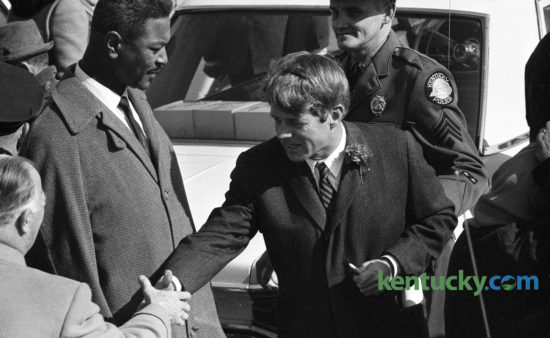
Sen. Robert F. Kennedy, center, shook hands with former Gov. A.B. “Happy” Chandler on Feb. 13, 1968, after arriving at Lexington’s Blue Grass Field for a two-day tour of impoverished areas in Eastern Kentucky. At left is Harry Sykes, Lexington’s first black city commissioner. Lexington’s Red Mile Place, off Versailles Road, was recently renamed Harry Sykes Way in honor of the former mayor pro tem and vice mayor. Click here to see an image of Sykes being sworn in as a city commissioner. Herald-Leader Archive Photo
Jackie Robinson at Frankfort civil rights rally, 1964
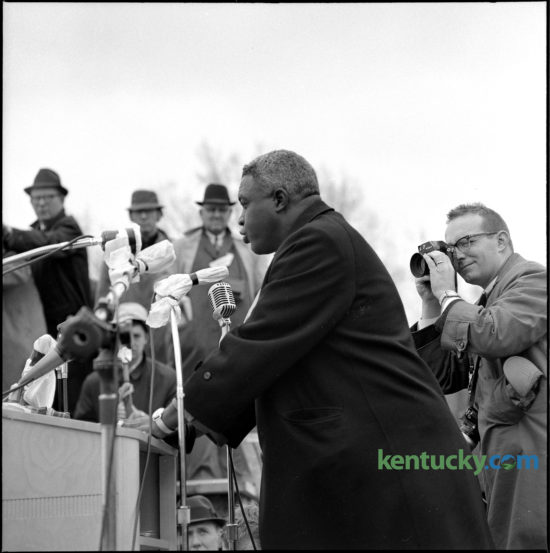
Former Brooklyn Dodgers star Jackie Robinson addressed a crowd of 10,000 at a civil rights rally on March 5, 1964, at the state capitol in Frankfort. Dr. Martin Luther King Jr. and other civil rights leaders led the peaceful demonstration, calling for a “good public accommodations bill” to prohibit segregation and discrimination in stores, restaurants, theaters and businesses. At right is photographer Bill Strode, who was on assignment for the Louisville Courier Journal. Click here to see a photo from our archives of King addressing the crowd. And click here to see an image of the large crowd. Herald-Leader Archive Photo
University of Kentucky campus, 1945-46
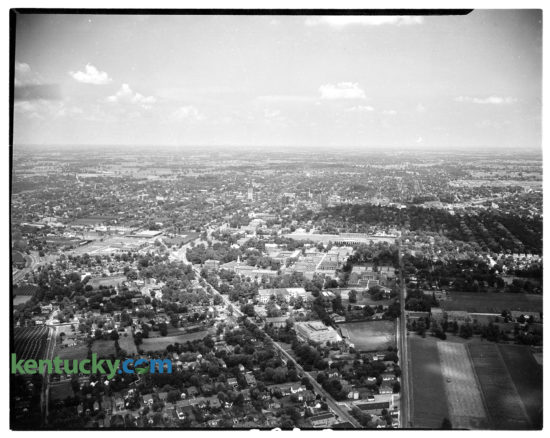
An aerial picture of the University of Kentucky campus during the 1945-46 school year. Downtown Lexington visible in background. South Limestone is seen running diagonally up from the bottom of the photo, while Rose Street moves vertically up the image. Between the two streets on campus are Memorial Hall and Stoll Field. Directly behind Stoll Field is the future site of Memorial Coliseum, which was under construction shortly after this picture. Further in the background, about exactly the middle of the image, is downtown Lexington, featuring Lexington’s first skyscraper, the First National Building. Click on the image for a closer look. Herald-Leader Archive Photo
Aerial view of Gratz Park, 1951
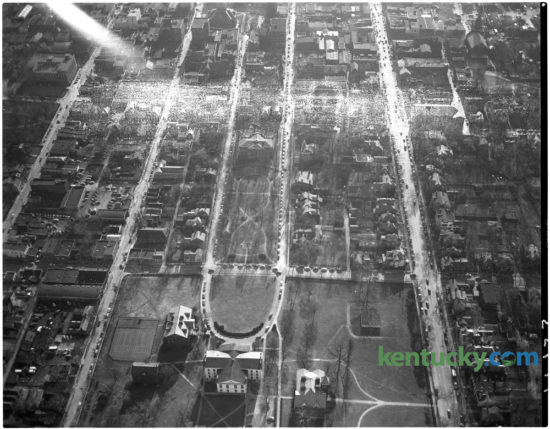
Aerial view of area of downtown Lexington around Gratz Park, center, in February 1951. Old Morrison on Transylvania’s campus is at bottom center. The Lexington Leader published the photo to illustrate a story about a proposed “downtown distributor” street that was being advocated in a major street plan to be presented to the city-county planning and zoning commission. This part of the route was to start at Limestone, on the left, and would’ve gone just beyond Broadway. It was to bisect historic Gratz Park. Residents of the park were expected to present their objections to the new street at a meeting of the zoning commission on March 1. The “distributor ” was proposed to facilitate movement of traffic to the downtown area from residential sections of Lexington. The proposed route was to run from Forest Avenue to Georgetown Street. Herald-Leader Archive Photo

